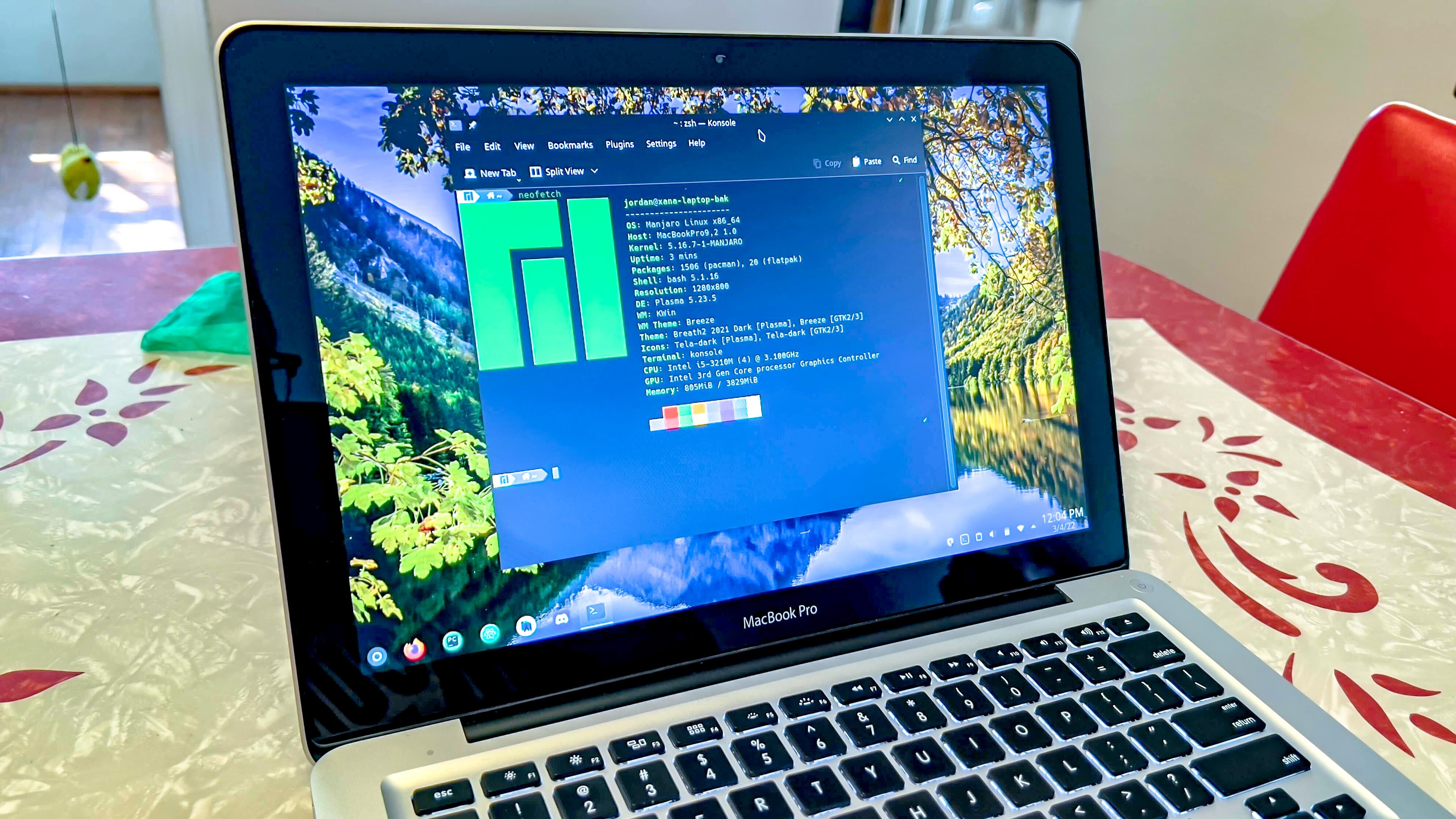7 things you didn’t know that ChatGPT can do
From writing a novel to creating a logo, there’s a lot that ChatGPT can do

ChatGPT is a potentially revolutionary AI-based tool that it taking the tech world by storm. Microsoft has even added ChatGPT to its Bing search engine.
Despite what some people may tell you, ChatGPT can’t do everything, and what it can do ChatGPT doesn’t always get right. That’s not a problem unique to ChatGPT — Google Bard made a costly mistake during its debut.
But what ChatGPT can do is still very impressive. It can generate news articles, summarize documents and even code basic websites. However, there are even further depths to what the chatbot AI can do that we are still discovering. In some instances, we won’t even know what ChatGPT can and can’t do until someone asks it to do something it’s never done before.
So, we decided to scour the internet for the lesser-known things that ChatGPT can do and tested some of them ourselves. Here’s what we found.

One final note, ChatGPT was incredibly slow and often produced error messages when using it for this article, which is likely due to high demand. Some may want to skip the wait and sign up for ChatGPT Plus. Read our explainer on ChatGPT Plus and why you may want to pay up for the premium subscription service.
Plus, I just put You.com’s AI chatbot to the test against the new Bing and the results may surprise you!
Make a brand logo
While ChatGPT can’t generate images — for that you’d need to use an AI tool like OpenAI’s DALL•E 2 AI image generator — what it can do, is code. Twitter user DataChazGPT recently highlighted how this can be used to create a scalable vector graphics (SVG) version of the Twitter logo. We tested it ourselves and the Twitter blue bird appeared without any issues. Note: ChatGPT when asked to do this will caveat its response, stating, “Please note that this is a simplified version of the Twitter logo and may not be suitable for official use.”
Get instant access to breaking news, the hottest reviews, great deals and helpful tips.
A neat #ChatGPT tip for designers from @faridsabitov!Ask it to generate an SVG icon + copy and paste it directly to @figma 🤯🤯🤯 pic.twitter.com/ViwL0Bt45LDecember 22, 2022
But it’s not just existing logos that ChatGPT can create. It can also create SVG code for a completely new logo — though with mixed results. We asked it to create a logo for a pizza restaurant and it managed to generate code for an SVG file, but the results weren’t anything we could use.

We then tried to get more specific, asking it to “Write SVG format code for a pizza restaurant named Tony's using a slice of pepperoni pizza” but again, ChatGPT wasn’t able to come up with something usable. So if you’re looking to create a brand logo from scratch, just make sure to check what ChatGPT provides you, as it doesn’t always work.
Create a 3D animation
Surprisingly, creating SVG files isn’t the limit of ChatGPT’s image rendering capabilities. YouTuber MarbleScience managed to use ChatGPT and JavaScript to produce a 3D animation of a marble bouncing on the floor. They did this by asking ChatGPT to create the code using “three.js” which is an open-source JavaScript library that allows for the creation of GPU-accelerated 3D animations.
Now there are a few catches with this feature. First, if you’re a novice to 3D animation generation, you’re not going to know how to take this code and turn it into a 3D animation. However, ChatGPT can provide you with code and steps for a starter 3D animation to try and create your first 3D animation using three.js.
Second, the code doesn’t always work without modifications. MarbleScience needed to work with the chatbot to further develop the code to make the marble actually bounce. Still, in the end, the results were impressive.
Compose music
If you ask ChatGPT to create a song, the way YouTuber Ramzoid did, it can do it with no problem. Much like with the earlier examples, you need to do a little extra leg work to create the finished product, but this is still a very cool feature.
We tested the feature ourselves and the results were eye-opening. When asked to write a “catchy pop song,” ChatGPT produced a potential hit single with multiple verses, a chorus and a bridge. We were still missing musical notes for the song, but a simple request for chord progressions was all it took for ChatGPT to fix that. You’ll still need to produce the music yourself, but if you’re a musician experiencing writer’s block, ChatGPT can definitely get the creative juices flowing again.
Create content in multiple languages
This is a seriously cool feature, and incredibly practical. ChatGPT is trained in numerous languages and cannot only create content in a specific language but can create it in multiple languages at once. We asked it to write a haiku in four different languages, and while it took the chatbot AI a minute to think about it, it eventually gave us the same haiku in English, German, Japanese and French.


We checked all four in Google translate and the results were slightly off but were always instances of Google producing a result that used a synonym of the word ChatGPT provided. A common culprit was Google translate producing the word “gently” where ChatGPT wrote “softly.” Also, while the haiku fit the 5-7-5 pattern in English, the translated words did not have the same syllables and therefore technically did not produce a haiku. But overall I was impressed.
Write a book — or at least a chapter
ChatGPT can allegedly write a whole book, but it definitely cannot write one instantaneously. It still takes a lot of time to produce the content, even if it “types” much faster than any human can.
When prompted with the request to write a sci-fi novel, ChatGPT told us that it lacked the resources to write an entire book. However, it did produce a chapter for us and it was surprisingly gripping — if short — first chapter of a sci-fi novel.
We tried to get it to iterate upon this first chapter but unfortunately, the chatbot crashed, as it did regularly throughout the research for this article. However, when we got ChatGPT up and running again, we were able to get it to write two chapters of a second sci-fi novel. With enough bandwidth, it very likely could write the entire novel.
Work as a Linux virtual machine

While Windows and macOS dominate the personal computer operating system market, Linux is popular with more advanced users. However, it takes some knowledge to run the operating system, which most commonly runs based on inputting commands rather than through a graphical user interface (though it does have one). The good news is that ChatGPT already knows those commands as part of its machine learning training and can be transformed into a fairly complex virtual machine.
Researcher Jonas Degrave put this to the test in their blog Engraved and the results were astonishing. ChatGPT was able to “connect” to an alternate version of the internet and even access itself within this alternate internet. To take things fully into The Matrix, Degrave was even able to get the alternate version of ChatGPT in this alternate internet to run as a Linux virtual machine within the Linux virtual machine it had already created.
On a lighter note, you can also play tic-tac-toe using the programming language python within this same Linux virtual machine. So that’s also cool.
Play a text-based role-playing game
Tic-tac-toe isn’t the only game ChatGPT can play. According to HowToGeek, the AI chatbot can serve as the dungeon master of a text-based role-playing game. ChatGPT will even make adjustments to choices you make outside of the provided prompts, which is relatively impressive, especially compared to the original version of text-based adventure games. It’s worth noting though that the more you mess with it by adding stats and rules, the more likely it is to make mistakes.

While the best PC games are more entertaining, this is still a retro way to have some fun. Enjoy.
Next: how to use ChatGPT on iPhone with Siri.

Malcolm has been with Tom's Guide since 2022, and has been covering the latest in streaming shows and movies since 2023. He's not one to shy away from a hot take, including that "John Wick" is one of the four greatest films ever made.
